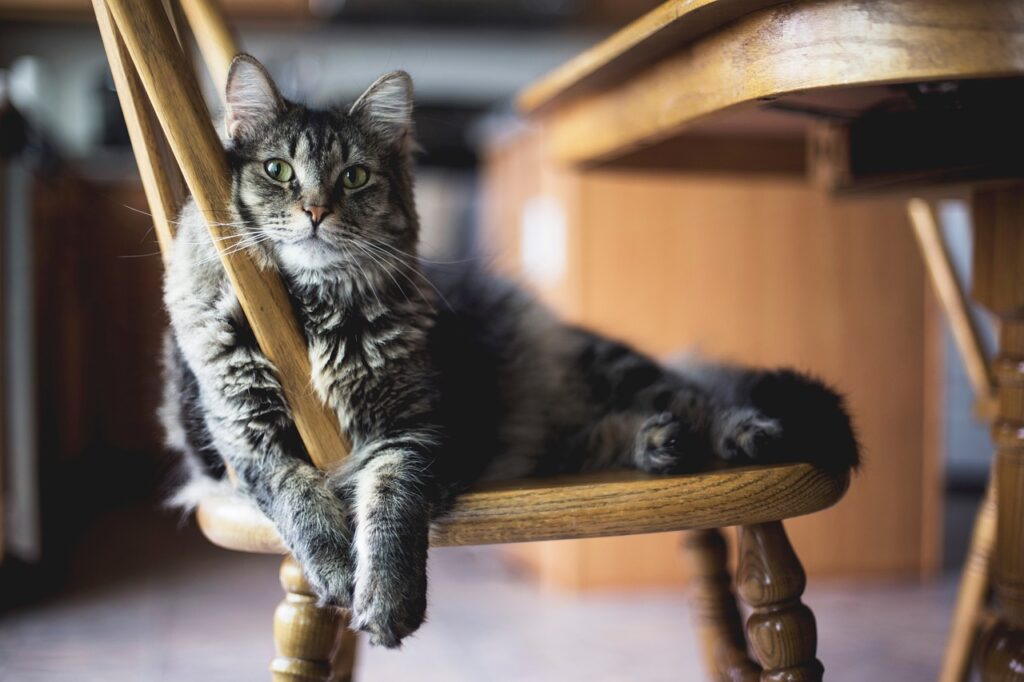Understanding Hypertension (High Blood Pressure) in Cats: What Owners Need to Know
 karishea/Pixabay.com
karishea/Pixabay.comAt 7 years of age and above, most cats are still playful and may appear youthful but there is an increasing risk of feline age-related problems developing.
Hypertension (often referred to as high blood pressure) is a medical condition that most humans have heard of. But did you know that cats over 7 years of age are at a higher risk than many other pets? In fact one in eight cats over the age of 9 are likely to be suffering from what has been labelled “The silent killer”.
Hypertension makes the blood in the vessels circulate at high pressure. This causes bleeding and damage to vital organs such as the kidneys, heart, nervous system and the eyes. Symptoms often go unnoticed by owners until the damage is done. Sudden blindness and kidney failure can be some of the more obvious results of the condition so prevention is very much better than cure in all cases.
Many cats presented to a veterinary surgeon with high blood pressure have an underlying disease. Chronic kidney disease (CKD) is the most common. This is followed by hyperthyroidism, a disease affecting the thyroid gland.
Rosanne Jepson, a specialist in small animal internal medicine at the Royal Veterinary College, said: “High blood pressure can cause severe damage to key body organs. Unfortunately, it is a condition that develops without much warning for the cat owner; a cat may seem perfectly fine until either the blood pressure is checked, or other organs are damaged.”
Recommendations for cat owners with mature cats:
- As advised by ISFM (International Society of Feline Medicine), owners of cats over 7 years of age are being urged to get their cat’s blood pressure checked at least once a year.
- Ask your vet about having your cat’s blood pressure monitored routinely.
- If the blood pressure is found to be high, there is treatment available. This will reduce the blood pressure and prevent damage to those vital organs.
- Often your vet will advise that your cat has a full blood screening carried out too. This is to rule out any underlying diseases already mentioned.
- Close and regular monitoring of your elderly cat is a sensible idea. Look out for other common signs of disease. This includes: weight loss, poor coat condition, changes in behaviour, appetite, thirst, urination, and general lethargy.
For more details on Feline Hypertension and Kidney Disease click here.
Here is some useful reading material for owners of cats who already have been diagnosed with kidney or thyroid problems:
- Caney M. A., Sarah (Author)
- English (Publication Language)
- 68 Pages – 11/19/2024 (Publication Date) – Vet Professionals Limited (Publisher)
- Caney M. A., Sarah (Author)
- English (Publication Language)
- 88 Pages – 04/01/2013 (Publication Date) – Vet Professionals Limited (Publisher)
I may receive commission when you click Amazon links on this page and make a purchase. However, this does not impact my recommendations, reviews or comparisons.
Want to learn more?
Here’s a selection of my courses which may help you understand more about feline behaviour:
Advanced Certificate in Feline Fear, Anxiety & Aggression
- Accredited Course
- 4 Hours of Webinars
- Downloadable Resources
- Certificate of Completion
- Lifetime Access
Introduction to Pet Anxiety Webinar
- Recorded Webinar
- Downloadable Resources
- Certificate of Completion
- Lifetime Access



